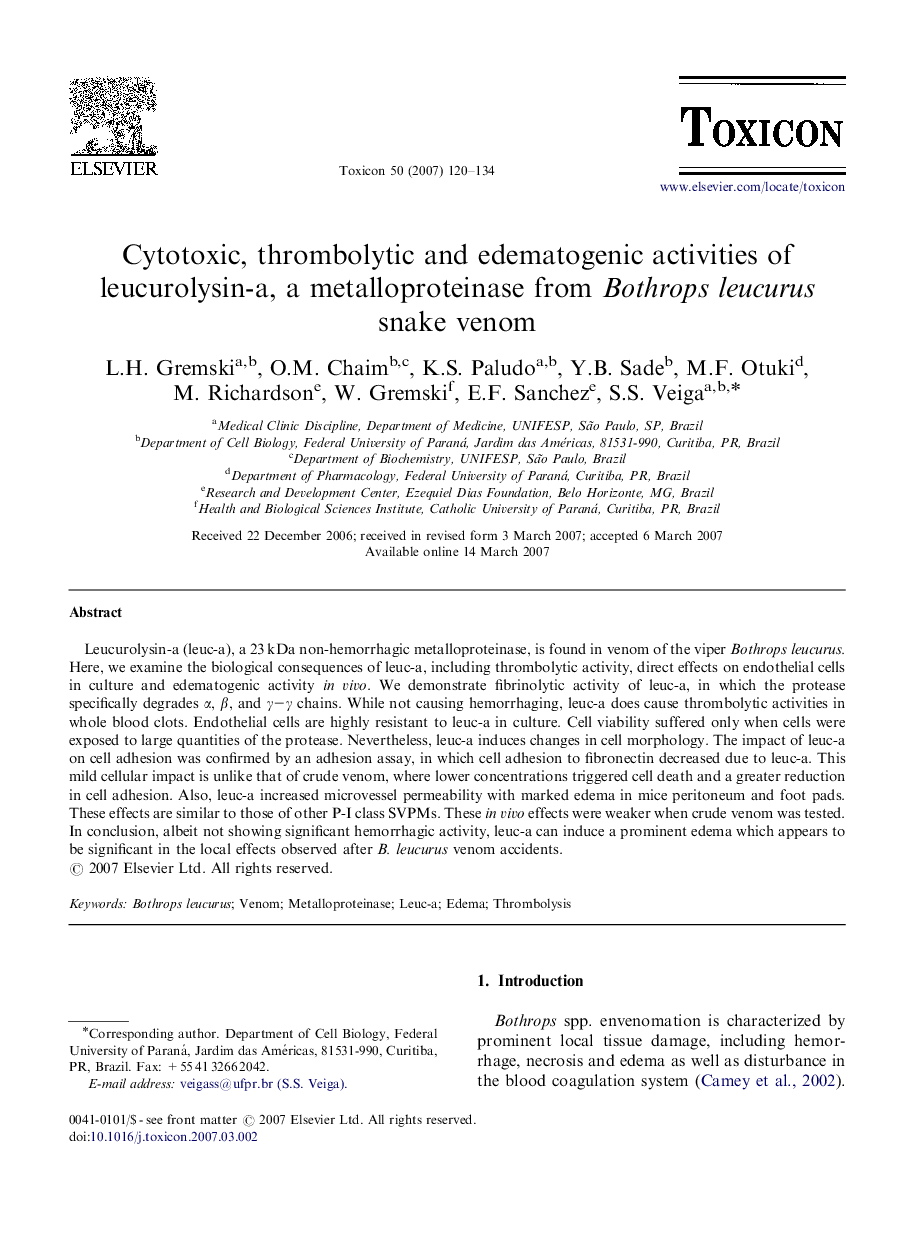| Article ID | Journal | Published Year | Pages | File Type |
|---|---|---|---|---|
| 2066822 | Toxicon | 2007 | 15 Pages |
Leucurolysin-a (leuc-a), a 23 kDa non-hemorrhagic metalloproteinase, is found in venom of the viper Bothrops leucurus. Here, we examine the biological consequences of leuc-a, including thrombolytic activity, direct effects on endothelial cells in culture and edematogenic activity in vivo . We demonstrate fibrinolytic activity of leuc-a, in which the protease specifically degrades αα, ββ, and γ–γγ–γ chains. While not causing hemorrhaging, leuc-a does cause thrombolytic activities in whole blood clots. Endothelial cells are highly resistant to leuc-a in culture. Cell viability suffered only when cells were exposed to large quantities of the protease. Nevertheless, leuc-a induces changes in cell morphology. The impact of leuc-a on cell adhesion was confirmed by an adhesion assay, in which cell adhesion to fibronectin decreased due to leuc-a. This mild cellular impact is unlike that of crude venom, where lower concentrations triggered cell death and a greater reduction in cell adhesion. Also, leuc-a increased microvessel permeability with marked edema in mice peritoneum and foot pads. These effects are similar to those of other P-I class SVPMs. These in vivo effects were weaker when crude venom was tested. In conclusion, albeit not showing significant hemorrhagic activity, leuc-a can induce a prominent edema which appears to be significant in the local effects observed after B. leucurus venom accidents.
